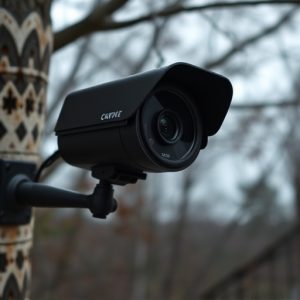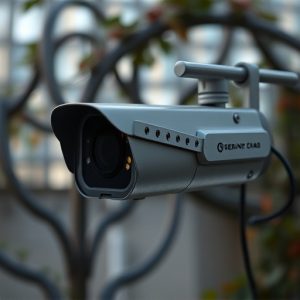Detecting Nanny Cameras with RF Detector Sweep Tutorial
RF detectors are crucial tools for professionals ensuring privacy in homes and public spaces, identi…….
RF detectors are crucial tools for professionals ensuring privacy in homes and public spaces, identifying hidden cameras like nanny cams with sound recording capabilities through radio frequency signals they emit. Before searching, equip yourself with specialized gear including an RF detector, antenna, headphones, notepad, and safety gear. First, power off electronics to reduce interference, then scan frequencies from low to high for sudden spikes indicating audio-transmitting hidden cameras. Confirm their presence by matching detected frequencies to known usage patterns and pinpointing sources in places like wall sockets or light switches.
Uncover hidden threats with our comprehensive guide on using RF detectors to locate nanny cameras with sound recording capabilities. Understanding Radio Frequency (RF) technology is key to detecting these covert devices, which often evade traditional searches. This tutorial equips you with the knowledge to prepare and conduct effective sweeps, ensuring your safety and privacy. Learn the essential steps to identify and disable hidden cameras, making your home secure from unseen surveillance.
- Understanding RF Detectors and Their Role in Detecting Hidden Cameras
- Preparing Your Equipment: What You Need for a Successful Sweep
- Step-by-Step Tutorial: Conducting an RF Detector Sweep for Nanny Cameras with Sound Recording Capabilities
Understanding RF Detectors and Their Role in Detecting Hidden Cameras
RF (Radio Frequency) detectors are specialized devices designed to identify and locate hidden cameras, often referred to as nanny cams with sound recording capabilities. These detectors work by scanning the radio frequency spectrum for signals emitted by hidden camera modules. As technology advances, so do the techniques used to hide these surveillance devices, making RF detectors an indispensable tool for professionals in fields like security, law enforcement, and privacy protection.
RF detectors play a crucial role in locating covert cameras, which can be strategically placed in homes, offices, or public spaces to capture sensitive information. By using radio frequencies, these detectors can penetrate walls, furniture, and other obstacles that might otherwise block visual detection. When an RF detector picks up a signal from a hidden camera, it alerts the user, enabling them to take appropriate action and ensure privacy is maintained. This technology has become increasingly important in today’s digital age, where privacy breaches and surveillance concerns are ever-present.
Preparing Your Equipment: What You Need for a Successful Sweep
Before embarking on a nanny cam with sound recording sweep, it’s crucial to have all the right equipment and supplies at hand. A successful search requires a combination of advanced technology and meticulous preparation. You’ll need a reliable RF (radio frequency) detector, known for its ability to pinpoint hidden devices emitting signals. These detectors can detect various types of cameras, including nanny cams, by scanning through numerous frequencies.
Additionally, ensure you have an antenna or amplifier to boost the detector’s sensitivity, making it easier to pick up faint signals. A good pair of headphones is essential for listening in discreetly during the sweep. Consider also having a notepad and pen for jotting down any suspicious readings and their locations. Proper safety gear like gloves and a mask might seem unusual, but they’re helpful when handling unknown devices to prevent accidental exposure to any potential contaminants.
Step-by-Step Tutorial: Conducting an RF Detector Sweep for Nanny Cameras with Sound Recording Capabilities
To conduct an RF detector sweep for a nanny camera with sound recording capabilities, start by turning off all electronics in the vicinity to minimize interference. Equip yourself with a reliable RF detector, ensuring it’s calibrated and ready for use. Begin scanning the frequency range, starting from lower frequencies and gradually moving upwards. Pay close attention to any sudden spikes or consistent signals on the detector’s display, as these could indicate the presence of a hidden camera transmitting audio.
As you sweep, slowly move around the area where the nanny camera is suspected to be installed. Keep an eye out for devices that do not emit significant interference but show up on the detector. Once a potential signal is identified, pinpoint its source by carefully checking common locations like wall sockets, light switches, or hidden compartments. Verify if the detected frequency matches known usage of Nanny Cameras with Sound Recording capabilities to confirm the device’s presence.
RF detectors are invaluable tools in locating hidden cameras, especially those equipped with sound recording capabilities. By understanding how these devices work and preparing your equipment properly, you can effectively conduct a sweep and identify potentially invasive surveillance devices. This tutorial provides a comprehensive guide, ensuring that anyone can learn to detect and prevent privacy breaches using an RF detector sweep for Nanny Cameras With Sound Recording.


